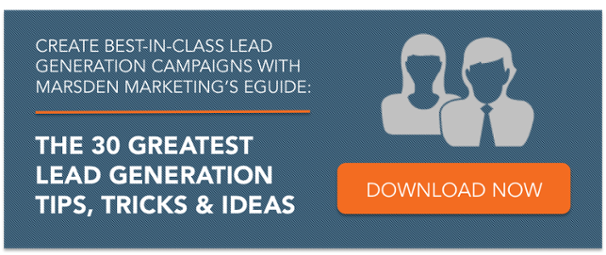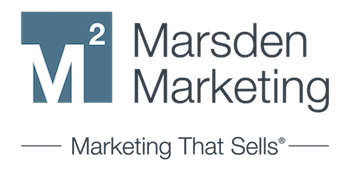 Focusing solely on traffic for your B2B website won’t get you the results that you’re looking for. If you have prospects habitually visiting your website but they never leave their contact information, then you’re experiencing a conversion issue.
Focusing solely on traffic for your B2B website won’t get you the results that you’re looking for. If you have prospects habitually visiting your website but they never leave their contact information, then you’re experiencing a conversion issue.
This is true whether you’re leveraging paid advertising, content marketing, or SEO. The money allocated toward your marketing efforts can easily dwindle with few to no results. To avoid this mishap, it’s important to align your marketing strategy with your conversion rate goals.
But before we move into the eight tips that can help you achieve higher conversion rates, let’s first define what a conversion rate is.
What is a Conversion Rate?
A conversion rate measures the percentage of people who visit a website page and click on a desired action that requires leaving their contact information. The actions could include the download of an asset like a white paper or checklist, signing up for a webinar or free trial, purchasing a product or solution, blog sign-up, or filling out a contact us form.
To calculate your conversion rate, you must first divide the number of conversions a webpage generated by the number of people who visited that page. You can do this for:
- Digital ads
- Website pages
- Landing Pages
- Blogs
Why is Knowing Your Conversion Rate Important?
Knowing your conversion rate is important because it allows you to determine the demand your content offers generate. In turn, you use this information to identify areas of opportunity where you can optimize your conversion rate.
Conversion rate optimization (CRO) refers to the act of modifying certain elements on a website page that will increase the chances of your website visitors leaving their contact information. You define the success of your modification by comparing the new results against your baseline conversion rate.
When optimizing your conversion rate, it is important to A/B test one element at a time to identify what has changed. A/B testing lets you determine which of the changes (A or B) results in a better conversion rate. Using this information, you can then leverage your findings on other website pages to boost your conversion rates.
HubSpot provides three formulas that help you establish your CRO goals:
- New Revenue Goal/Average Sales Price = # of New Customers
- # of New Customers/Lead to Customer Rate % = Lead Goal
- Leads Generated/Website Traffic x 100 = % Conversion Rate
8 Tips for Higher Website Conversion Rates
Minimize the Number of Fields in Your Forms
No one likes a cross-examination so avoid turning your landing page into an interrogation room. Focus on what you need. Sometimes a name and email address is enough. Even though you’re dying to feed your sales team with as many details as possible, the last thing you want is to have a prospect leave your webpage because your form was too complicated.
Conduct a Website Content Audit
The goal of your website is to attract prospects who have a genuine interest in your products or services. Analytics can tell you a lot about where they are in the buying cycle. Take a hard look at the premium content you are offering and ask yourself if it matches the visitor’s intent. If that’s not the case, then change it or move it to another web page.
Make Your Calls-to-Action (CTA) Clear and Compelling
Do you want higher blog subscriptions? More downloads of an asset? Then don’t make prospects hunt for buttons. Place them appropriately and prominently on your website. Play around with different colors, graphics, and wording. Your CTA buttons should jump out. To make it easy, leverage your brand style guide to make sure your CTAs are on brand.
Keep Your Copy Simple & Human
Prospects don’t enjoy rummaging through your industry’s fluff to finally get the answer they want. Reduce the amount of risk they take and simplify the way they view the pros and cons of your product/service. Industry jargon should be kept within your industry. Use words that are simple to comprehend to make your brand sound more human. You can also use a video to put a face on your product. This leads to our next tip.
Clearly State the Benefits of Your Product or Service
Why should they care? Asking yourself this question will help you steer the conversation in the right direction. The benefits of your product or service should fit into their routine without interruption, but you only have a finite amount of time to convince them that this is the case. Communicating the benefits of your product or service will give you a better chance of convincing your potential customers that your product isn’t a hindrance to the way they operate.
Select the Right Keywords for Digital Ads
Cost per click (CPC), volume, and keyword difficulty are metrics every marketer should pay close attention to when picking targeted keywords for campaigns. Don’t go for a keyword with a high difficulty rating and CPC if you don’t have the budget. Shooting for the stars is for dreamers, not marketers. Taking this approach will save you from spending your limited budget on dead leads and saturated markets.
Find a unique method to reach your customers with keywords that are personalized yet broad enough to attract conversions that turn into leads. This principle also works with other content formats.
Optimize Your High-Performing Blogs and Webpages
While CPC doesn’t apply to your blog and website copy, volume and difficulty do play a role. The rule of thumb here is to focus your efforts on blogs and webpages that have high traffic volume but low conversion rates. It’s possible that your content offer or CTA is not properly aligned to the content on the page. Also, take a look at your high-converting pages to see what works. Perhaps the headline is compelling, and the CTA is text based over graphic based. Note these things and create a little cheat sheet you can use for other pages.
Consider Retargeting
Fact is, most people won’t convert on your website on the first visit. But using retargeting, also known as remarketing, provides another avenue to reengage with them long after they have left your website. Retargeting works by tracking visitors on your website and then serving them online ads as they go to other websites. A good rule of thumb is to leverage this tactic on high-converting pages for best results.
Most B2Bs tend to focus on website traffic as the defining factor that determines success. However, the initial feeling of accomplishment soon dissipates once they realize that high traffic volume doesn’t necessarily translate to more revenue. Take the time to analyze your conversion rates to find for improvement. Following the eight tips we just equipped you with will get you off to a great start.
Looking for more tips on lead generation?
Check out our 30 Greatest Lead Generation Tips, Tricks & Ideas.





